Potrebujeme váš súhlas na využitie jednotlivých dát, aby sa vám okrem iného mohli ukazovať informácie týkajúce sa vašich záujmov. Súhlas udelíte kliknutím na tlačidlo „OK“.
ASTM E2047-10(2015)
Standard Test Method for Wet Insulation Integrity Testing of Photovoltaic Arrays
Automaticky preložený názov:
Štandardná skúšobná metóda pre Wet izolácie Integrity Testovanie fotovoltaické články
NORMA vydaná dňa 1.3.2015
Informácie o norme:
Označenie normy: ASTM E2047-10(2015)
Poznámka: NEPLATNÁ
Dátum vydania normy: 1.3.2015
Kód tovaru: NS-586211
Počet strán: 4
Približná hmotnosť: 12 g (0.03 libier)
Krajina: Americká technická norma
Kategória: Technické normy ASTM
Kategórie - podobné normy:
Anotácia textu normy ASTM E2047-10(2015) :
Keywords:
electrical testing, insulation integrity, insulation resistance, photovoltaics, solar energy,, ICS Number Code 27.160 (Solar energy engineering)
Doplňujúce informácie
| Significance and Use | ||||||
|
5.1 The design of a PV module or system intended to provide safe conversion of the sun's radiant energy into useful electricity must take into consideration the possibility of hazard should the user come into contact with the electrical potential of the array. In addition, the insulation system provides a barrier to electrochemical corrosion, and insulation flaws can result in increased corrosion and reliability problems. This test method describes a procedure for verifying that the design and construction of the array provides adequate electrical isolation through normal installation and use. At no location on the array should the PV-generated electrical potential be accessible, with the obvious exception of the output leads. The isolation is necessary to provide for safe and reliable installation, use, and service of the PV system. 5.2 This test method describes a procedure for determining the ability of the array to provide protection from electrical hazards. Its primary use is to find insulation flaws that could be dangerous to persons who may come into contact with the array. Corrective action taken to address such flaws is beyond the scope of this test method. 5.3 This procedure may be specified as part of a series of acceptance tests involving performance measurements and demonstration of functional requirements. Large arrays can be tested in smaller segments. The size of the array segment to be tested (called “circuit under test” in this test method) is usually selected at a convenient break point and sized such that the expected resistance or current reading is within the middle third of the meter's range. 5.4 Insulation leakage resistance and insulation leakage current leakage are strong functions of array dimensions, ambient relative humidity, absorbed water vapor, and other factors. For this reason, it is the responsibility of the user of this test method to specify the minimum acceptable leakage resistance for this test. 5.4.1 Even though a numerical quantity is specified, actual results are often pass-fail in that when a flaw is found, the leakage current changes from almost nothing to the full scale value on the meter. 5.5 The user of this test method must specify the option used for connection to the array during the test. The short-circuited option requires a shorting device with leads to connect the positive and negative legs of the circuit under test. For larger systems, where the shorting device may have to be rated for high current and voltage levels, the open-circuited option may be preferred. The open-circuited option requires the user to correct readings to account for the PV-generated voltage, and the procedure for making such corrections is beyond the scope of this test method. The short-circuited option may be easier for small systems where the voltage and current levels are low and the distance between the plus and minus leads of the circuit under test are small. The short-circuited option minimizes the chance of exposing array components to voltage levels above those for which they are rated. |
||||||
| 1. Scope | ||||||
|
1.1 This test method covers a procedure to determine the insulation resistance of a photovoltaic (PV) array (or its component strings), that is, the electrical resistance between the array's internal electrical components and is exposed, electrically conductive, non-current carrying parts and surfaces of the array. 1.2 This test method does not establish pass or fail levels. The determination of acceptable or unacceptable results is beyond the scope of this test method. 1.3 The values stated in SI units are to be regarded as standard. No other units of measurement are included in this standard. 1.4 This standard does not purport to address all of the safety concerns, if any, associated with its use. It is the responsibility of the user of this standard to establish appropriate safety and health practices and determine the applicability of regulatory limitations prior to use. |
||||||
| 2. Referenced Documents | ||||||
|
Podobné normy:
Historická
1.9.2014
Historická
1.2.2015
Historická
1.2.2015
Historická
1.3.2015
Historická
1.6.2010
Historická
1.11.2013
Odporúčame:
Aktualizácia technických noriem
Chcete mať istotu, že používate len platné technické normy?
Ponúkame Vám riešenie, ktoré Vám zaistí mesačný prehľad o aktuálnosti noriem, ktoré používate.
Chcete vedieť viac informácií ? Pozrite sa na túto stránku.


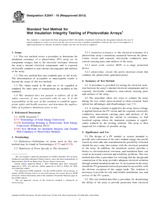
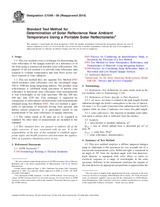 ASTM C1549-09(2014)..
ASTM C1549-09(2014)..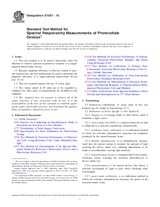 ASTM E1021-15
ASTM E1021-15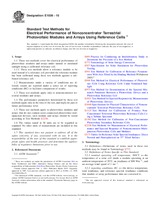 ASTM E1036-15
ASTM E1036-15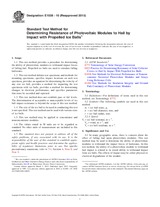 ASTM E1038-10(2015)..
ASTM E1038-10(2015)..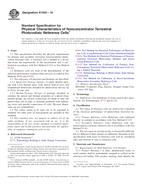 ASTM E1040-10
ASTM E1040-10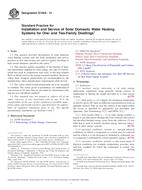 ASTM E1056-13
ASTM E1056-13
 Cookies
Cookies
